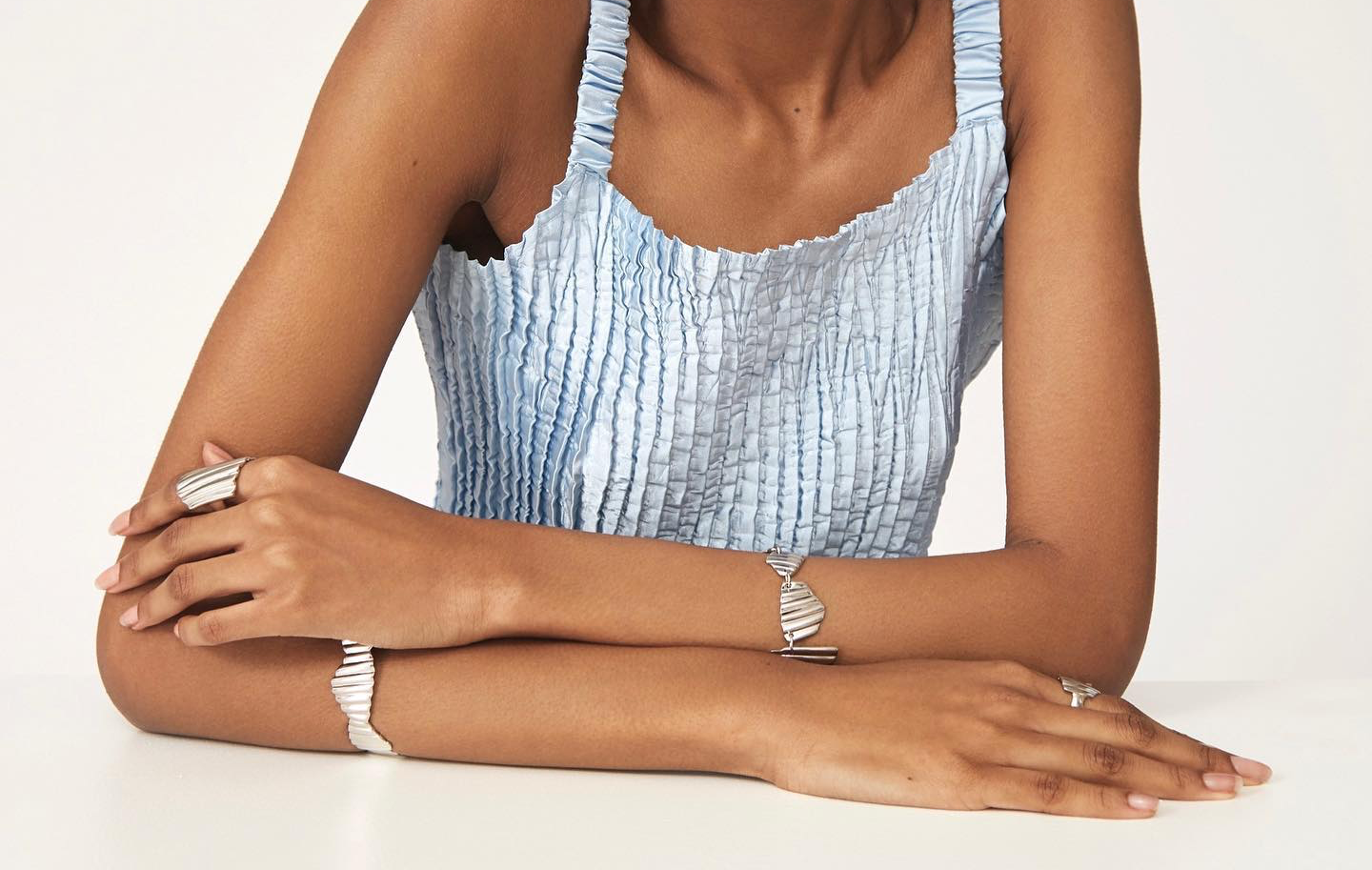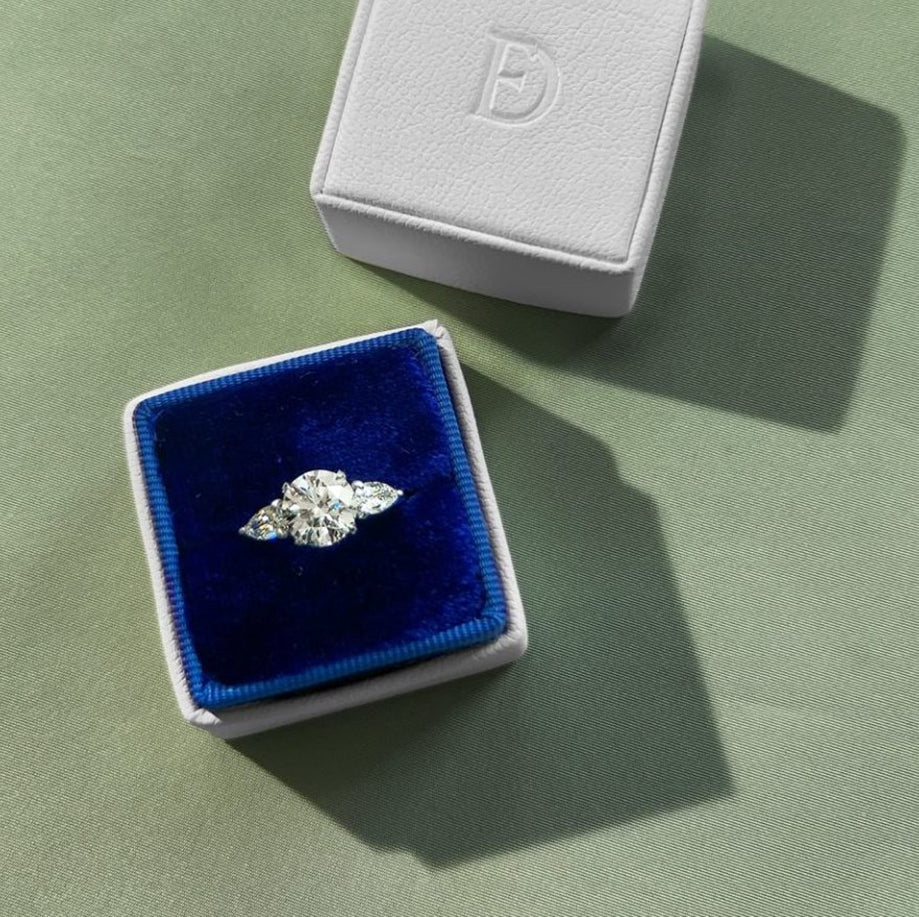For many creative people, a hobby like jewelry making is a great way to unwind after a long day. But what if your creations start getting attention from friends and strangers? At that point, you might ask yourself, “Could my hobby become a business?”
Learning how to start a jewelry business requires an understanding of the industry. For one thing: It’s growing. The global jewelry market is expected to increase by $46.3 billion between 2024 and 2028. In other words, there’s plenty of room for newcomers who can find an untapped niche or bring a fresh perspective to the craft.
If you’re looking for a creative way to make money, read on. This guide contains expert advice on how to start your jewelry business, based on the experiences of jewelry designers that built their brands from scratch.
How to start a jewelry business in 9 steps
- Find your niche in the jewelry industry
- Research market trends
- Define your brand
- Produce or source your jewelry products
- Set up a jewelry business studio or workspace
- Take professional photos of your products
- Build your ecommerce store
- Market your ecommerce jewelry brand
- Scale your business
1. Find your niche in the jewelry industry

The jewelry industry is full of niches and sub-categories—everything from cheap and cheery plastic beads to fine-art precious metals and gems. One of the first questions to ask yourself is: What type of jewelry am I going to sell?
You can opt for fine jewelry, costume jewelry (also known as fashion jewelry), or something in between. Each category has its own materials, production process, price point, and customer profile.
Let’s look at qualities associated with the main types of jewelry.
Fine jewelry
Fine jewelry is at the top end of the market and can be identified by the following qualities:
- Made with precious metals and gems
- Higher price points
- Made with master craftsmanship
- Rarely mass produced
- For luxury, wedding, and special occasion customers
Fashion or costume jewelry
Costume jewelry is sold by chain boutiques and online stores. You can spot it by these properties:
- Designs based on current fashion trends
- Made of beads, wire, plated metal, plastic, and synthetic gems
- Lower price points
- Often mass produced
- For the everyday customer
Artist-designed jewelry
This category captures everything in between. Handmade jewelry requiring specialized skill and mid-range materials are found here. Bespoke jewelry will have the following qualities:
- Varied materials mixing inexpensive and precious (textile, metals, semi-precious gems, wood, 3D printing, etc.)
- Unique designs (collectible, made to order, one of a kind)
- Skilled craftsmanship
- Mid-range price points that correlate to a designer’s popularity
- Occasion or statement pieces for collectors and gift-giving customers

Once you’ve narrowed down the broad category for your startup jewelry business, it’s time to carve out a niche for your products.
Start by defining your ideal customer (classic, trendy, brides, socially conscious consumers) and decide if your products are occasion-specific (weddings, parties) or for everyday wear. This will determine how you market them to your target audience.

Jewelry products and categories
Once you’ve decided on your market, consider whether you will sell a number of product types or focus on one item. For example, you may want to niche down and specialize in engagement rings or go broad with a collection of mix and match fashion pieces.
Consider the following products for your jewelry company:
- Rings (sized or adjustable)
- Necklaces (chokers, pendants)
- Bracelets (bangles, cuffs)
- Earrings (drop, clip-on, studs)
- Engagement and wedding rings (engagement, for men)
- Watches
- Toe rings, body chains, and other body jewelry
- Piercings (nose, navel)
Also consider complementary products and categories. Jewelry brand Wolf & Moon sells its signature styles in both hair accessories and bags.

2. Research market trends
Before you start developing your brand and products, it’s essential to know your audience.
Following jewelry trends
Researching trends is one way to validate your chosen direction. Read fashion and jewelry blogs and follow fashion influencers and popular TikTok creators in the space to stay on top of trends for each upcoming season. Look to other jewelry designers for inspiration.
And, don’t be afraid to dig into some data. Using Google Trends, you can also see broad global search volume for a particular term.
 Alternatively, you might look into adjacent consumer trends, such as the appetite for customizable experiences like engraving. Or tap into the growing trend of sustainable shopping habits by using ethically sourced materials.
Alternatively, you might look into adjacent consumer trends, such as the appetite for customizable experiences like engraving. Or tap into the growing trend of sustainable shopping habits by using ethically sourced materials.
But business owners don’t have to just follow trends—you could also use your jewelry business to start your own. That’s what Biko founder and designer Corrine Anestopoulos did, launching her collection based on personal style.

“Somehow I felt like, just by fluke, I found a market for something new without meaning to,” Corinne says. “But it was just my taste.” When she launched, Corinne was working with a brassy finish. “Nobody else was doing that,” she says, noting that shiny silver was the trend at the time.
Though Biko’s collections evolve with trends in the jewelry industry every year, the common thread is a recognizable look that defines the brand and secures repeat business.
Finding jewelry design inspiration everywhere
Success as a newbie in any facet of the fashion industry depends on strong aesthetic, unique design, and consistent branding. Before hiring a designer to develop branding or crafting individual pieces, business owners should run through a few exercises to define their overall signature style.
Depending on how you like to get inspired, you may set up Pinterest boards, design your own digital mood boards, use a jewelry design mobile app, or even assemble inspiration physically on a bulletin board or in a sketchbook.


Collect images, colors, and textures from nature, architecture, fashion, or travel, and then identify themes that emerge. “Never stop being inspired,” says Corinne. “I’m always drawing inspiration and collecting inspirational images, no matter where I am.”
3. Define your brand
Successful jewelry businesses all have one thing in common: a rock solid brand.
Remember, brand is different from branding. Brand is your voice, mission, vision, and your brand story. It tells your potential customers how to feel about your products. Fashion purchases are often emotional, and emerging brands can win customers by connecting on a personal level, even through something as simple as a business name.
Telling your brand story and finding your voice
Your brand guidelines will inform everything you do as a brand. This essential document will capture everything from voice and tone to mission and values. It will be useful in keeping your communications consistent even as you scale.
Best practices for jewelry brands:
- Understand your audience. How do they speak? What tone and slang would resonate with them?
- Establish a brand voice and tone guide.
- Tell your story through your About page.
- Add personality to your social media posts by sharing the process and inspiration behind your designs.

Packaging, logo, and brand identity
Branding refers to the tactical elements that represent your brand visually: logo, packaging, business cards, and your website.
Once you’ve established your products’ aesthetic, chosen a business name that resonates with your audience, and nailed your customer profile, it should be easier to identify an overall look that will define your brand. This is an essential step, even for a small business, so don’t rush it.
Branding design tasks to complete as a new jewelry business owner:
- Decide on fonts, colors, and photography aesthetic.
- Develop the logo yourself using a free online logo maker or hire a pro.
- Create a library of brand assets, including multiple versions of your logo and other design elements that will appear on packaging, social media, and your website.
- Choose a recognizable domain name to help your customers find and remember your website.
- Design product packaging and creative shipping materials to match your branding.


For larger budgets, work with a designer to translate your vision into a full branding package for your business—from the logo and website to packaging and marketing materials. Peruse the portfolios of Shopify design partners to find a designer whose work resonates with your tastes.
Keep in mind that you’ll still want to reserve some of your budget for professional product photos. We’ll discuss the importance of photography for jewelry later in this post.
Writing a jewelry business plan
A formal business plan may not be necessary if you don’t plan to pitch your idea to investors or seek other forms of outside funding at the start. However, checking out a few business plan templates may be a good exercise to help you understand your target audience, goals, business model, costs, and growth plan. It’s also helpful as you learn how to run a jewelry business.
Your business plan can outline your brand’s mission and values, which will help you align with the right investors for your business.
4. Produce or source your jewelry products

How you’ll develop your products—by hand or in a factory, at home or outsourced—depends on the complexity of the design, price point, materials, and required skill level. In this section, we’ll discuss how to start a jewelry business through five production and sourcing methods:
- Handcrafted jewelry production: fine and one of a kind
- Handcrafted jewelry production: fashion and costume
- Jewelry production: factory outsourced
- Jewelry production: print on demand
- Jewelry curation: dropshipping and resale
1. Handcrafted jewelry production: fine and one of a kind

Handcrafting one-of-a-kind jewelry can be one of the most involved yet versatile of the production methods.
Depending on materials and design, some methods of bespoke jewelry production require specialized training/certification and expensive equipment. You may need to learn some of these methods, including:
- Soldering
- Silver/goldsmithing
- Casting
- 3D printing
- Laser cutting
- Leather tooling
- Weaving
- Gemstone setting
Consider starting with free online tutorials to learn how to make jewelry. You can then upgrade to paid classes or apprentice under an experienced craftsperson to expand your skill set.
2. Handcrafted jewelry production: fashion and costume

Handmade costume jewelry often involves the assembly of existing elements—chain, wire, beads, cast pendants—and doesn’t require special training or equipment beyond basic hand tools.
This type of business is easier to scale, as you can purchase elements in bulk and create templates for assembly by hired production staff.
If design and production are the elements of your business that bring you joy—and not the actual task of making jewelry—outsource or hire for other roles to help you scale the creative work.
Biko founder Corrine reaches out to local universities with renowned fashion communication programs to find her interns. “I don’t ever look for anyone who’s interested in design,” she says. “What I need is someone to help me free up my time so that I can be designing more.”
3. Jewelry production: factory outsourced
Rather than making the jewelry with your own hands, you can have your designs manufactured by someone else. This isn’t ideal for fine, custom, or one-of-a-kind jewelry, but it can be cost-effective for fashion jewelry produced in larger quantities. There are two main options for outsourcing to a jewelry manufacturer: local and overseas.
- Local manufacturing has the benefit of a “made local” appeal and creates easier opportunities to build relationships and have factory oversight. The downsides can include higher costs, limited choice, and production volume limitations.
- Overseas manufacturing can be a good solution if you want to keep costs low (for those doing high volumes) and have more choice in factories. Possible challenges include communication barriers, less oversight, and fulfillment issues caused by supply chain delays.
Accurate sketches or 3D renderings of your designs are necessary if you’re outsourcing to a manufacturer. There are several options, depending on your skill level and budget:
4. Jewelry production: print on demand
The most hands-off production method involves uploading your designs to a print-on-demand app. Your original designs are 3D printed or recreated in stainless steel, wood, plastic, gold, or silver and shipped directly to your customers.
The Shopify App Store is packed with companies that can turn your designs into a number of goods, from mugs to t-shirts to jewelry.

5. Jewelry curation: dropshipping and resale
If you’re not creative but still have a passion for jewelry, consider resale and curate jewelry pieces from other designers to sell in your own online store. You can carry inventory and ship it yourself or opt for a jewelry dropshipping model.
With dropshipping, there’s no need to carry any inventory. Sell products through your online jewelry business and the orders are shipped directly to your customers by the vendor.
5. Set up a jewelry business studio or workspace
 If you elect to make your jewelry in-house, you’ll need a workshop space for you and your team. When setting up this space, consider the following:
If you elect to make your jewelry in-house, you’ll need a workshop space for you and your team. When setting up this space, consider the following:
- Maneuverability. Consider the flow of the space, especially if the assembly has multiple steps—do you move from one station to the next in a logical sequence?
- Safety. Some chemicals or tools involved in jewelry making require proper ventilation and safety precautions. Check with local laws governing use of these substances and processes.
- Storage. Well-organized multi-compartment storage is essential for small parts.
“A jeweler’s bench, a flex shaft, and your safety would be the most important considerations,” says Gillian Johnson, founder of Canadian jewelry brand Hawkly. “The flex shaft is a wonderful and versatile tool that you can use for drilling, finishing, and polishing your pieces.” She also advises using a face mask and safety goggles—and for those with long hair to pull it back so it doesn’t get caught.
If your production team is larger or your requirements are a little more complex—as with metal work or silversmithing workshops—consider commercial space outside of the home. If it’s out of your budget at launch, look into co-op studio space or share the costs of space and equipment with other creatives. Gillian splits her studio with two other businesses.
Space sharing also helps combat entrepreneur loneliness, something Corrine is familiar with. “After doing Biko full time for a while, I ended up working at a retail clothing store once a week just to not be lonely at home in my studio.”

Jewelry equipment and tools
There are several online resources for how to make jewelry online, including wholesale jewelry making equipment, tools, and supplies, including precious gemstones and raw metals.
Gillian relies heavily on word of mouth when it comes to her wholesale suppliers. “Don’t be afraid to ask other designers where they find their supplies,” she says.
She also attends trade shows and industry events to continue to expand her network and discover new materials. “My favorite place to source the newest stones and silver findings is the Tucson Gem and Jewelry Show,” Gillian says. “There are thousands of vendors from all over the world.”
6. Take professional photos of your products

Product photography can make or break your online store. This is true across many industries but is especially important for brands in the fashion industry.
In many cases, with a very simple lighting setup, you can achieve great DIY photos of your products, even with your smartphone. Jewelry, however, can be a little more challenging, due to the tiny details and reflective surfaces.
“Don’t skimp on photography,” Corrine says, even if you’re on a budget. A professional photographer is skilled at making models feel comfortable and setting up complicated lighting.
Other additions to your photoshoot team include stylists, makeup artists, and assistants.
Hiring models doesn’t have to break the bank. “There are always people who are looking to build their book or willing to work for product,” she says. “It’s not about taking advantage of people—you’re all new to the game. If you get a group together and join forces, you can create magic together.”
When shooting your photos, it’s also important to offer several different views and angles of your products within these two categories:
- Product photos. These are clear shots of the product on a clean background to minimize distraction and highlight the details and different angles of the piece. These photos can create a clutter-free, consistent look on collection pages.
- Lifestyle photos. These are secondary shots, usually on a model to show scale on the body and suggest styling ideas to customers (often great for upselling—you can nudge customers to combine multiple pieces into one look). These shots can work on product pages or in a lookbook and are generally better for social media posts.


Looking for more ways to cut costs? Partner with complementary apparel brands to reduce photography expenses or lend your jewelry pieces to fashion editors for photoshoots in return for product photos and exposure.
💎 Essential reading:
7. Build your ecommerce store and start selling jewelry online

Now that you have your production, brand, and photography nailed down, let’s put it all together. To start your own jewelry line, you don’t need an expensive and complicated website to be successful. You can set up a Shopify store using a free theme, customized with your brand assets, fonts and colors.
Choose a website template that complements jewelry, putting the photography first. Here are a few Shopify theme suggestions for jewelry businesses:
Clean themes are designed to let your products and brand shine and most options allow you to easily customize the experience, even if you’re not a designer or developer.
Essential pages and content

The following pages and details are essential for an online jewelry business’s website:
- Homepage. Large lifestyle photos here immediately hook a visitor. Keep this page clutter-free and focused on new and trending products and collections with a clear CTA.
- Collection pages. Slice and dice your products into collections by type, price point, material, or occasion.
- Product pages. Product pages include essential information like sizing, materials, and care instructions. Feature several photos here to cover every angle.
- FAQ, Contact, and About pages. These are critical pages for any ecommerce store. Focus on customer service and telling your brand story.
Across all pages, website copy should reflect your brand voice and inspire emotion (what do you want the customer to feel?) while also being detailed and helpful. Product descriptions should pull in your brand story while also providing technical information.
Apps for jewelry businesses
There are several apps in the Shopify App Store you can add to your site to help with how to run a jewelry business—everything including improving the customer experience, reducing returns, and increasing conversions. Here are a couple examples recommended for jewelry businesses:
8. Market your ecommerce jewelry brand
Fashion and jewelry are heavily saturated industries. How will customers hear your voice above the noise? A good marketing strategy will depend on your product, audience, and budget and may require some trial and error. Customer acquisition will be an ongoing concern for your brand—here are a few ways to get started.
Social marketing
Making jewelry sales doesn’t mean having to bombard your followers with sales pitches. Corinne recommends filling the gaps between product-focused posts with inspirational content. “After a while, you’ll realize that you’re inspired by a similar stream of things and it tells its own story.”
Focus on each social network separately, testing content to see what sticks. Each platform has its own vibe—TikTok is known for authentic and quirky short videos while Instagram is better for more polished photo and video content. It’s still possible to gain some traction with organic posts, but consider paid social media campaigns to drill down on your demographic and increase reach.
Collabs and influencer marketing
Corinne has also had success with Instagram influencers, bartering product for a dedicated post. Before reaching out, she says, be sure your curation and hashtags for Instagram are strong so influencers can see if your brand aligns with their own. “Creating a lifestyle around what you do is worth more than anything,” she says.
Influencer marketing offers a level of social proof you can’t get with straight advertising. Younger consumers increasingly trust social media creators for product recommendations. Shopify Collabs is a great place to connect with influencers looking to promote your product.
Another way to take advantage of organic marketing is to collaborate with other brands. This can be done through co-marketing a promotion, running an event with other brands, hosting a tandem giveaway, or even partnering with a compatible brand on a new product.

Public relations for jewelry brands
Jewelry marketing can have unique challenges. Noticing heightened competition in 2011, Corinne invested in a rebrand of Biko and then hired a PR firm to get the word out. “It’s expensive to work with PR but really, really valuable,” she says. “It led to the best press I had to date. I sold $5,000 of one particular bracelet after it was featured.”
Experiment with every marketing strategy, from ecommerce SEO to email marketing, and analyze results to see what works best for your brand.
How a Celeb Instagram Endorsement Boosted This Jewelry Brand
Licia Young’s toilet paper-themed earrings gained recognition when Britney Spears posted them on Instagram. While the exposure led to some sales, Licia emphasizes the importance of long-term audience cultivation over fleeting viral exposure.
Pop-up retail, wholesale, and artist markets
Corinne’s career began when she was invited to share a booth at a local clothing show. At the time, jewelry was simply a hobby. She sold out on day one of a two-day show, validating her idea and helping to turn her passion into a business.
Attending a handmade market is not only a great way for emerging brands to gain exposure to built-in audiences and validate an idea—they’re also important for established online businesses. “Markets offer the opportunity to get out and see customers in person and get feedback directly,” says Corinne.
An alternative to participating in markets is to host events in your own studio. “Sample sales are a good way to liquidate older merchandise and also invite people into your space and process,” Corinne says. Or, if your own space isn’t conducive to visiting, host a pop-up in another retailer’s jewelry store.
Corinne also grew her business initially through consignment and wholesale agreements, which she gained by approaching local retailers in person. Cold calling has a high rejection risk, but you just need one “yes” to get started, she says.
9. Scale your business

For new businesses, start small by pitching your designs to local boutiques. As you scale, you can work your way up to larger partners. Wholesale still accounts for the bulk of Biko’s overall business, and Corinne has worked with large retailers like Nordstrom, Simons, and Hudson’s Bay.
Another way to scale involves opening up to new markets. Explore international shipping options to see if your product can be sold globally. Try expanding your jewelry line with new products and collections to reach a wider local audience, too.
Start selling jewelry online now
Taking the plunge might be scary at first, especially in a market as saturated as jewelry. But it’s also an industry you can enter gradually—many successful jewelry designers debuted their brand as a side gig or launched businesses from a kitchen table.
Small-scale production means you can get designing from your own home. All you need is a niche, a brand, and a basic business plan. And, there’s still room for emerging designers to make their mark. “The best way to stand out is to be authentic, trust your design instincts, and listen to your customers,” says Gillian. Go for gold!
Feature illustration by Pete Ryan
How to start a jewelry business FAQ
How do you start a jewelry business online?
To start a successful jewelry business online, follow these steps:
- Find your niche.
- Research the market and trends.
- Write a business plan.
- Define your brand.
- Produce or source jewelry products.
- Take professional photos of your products.
- Build your online store to sell jewelry.
- Market your jewelry company.
- Scale your business.
Consult Shopify’s ultimate guide for more detailed information on how to start a business.
Do I need a business license to sell jewelry online?
It’s important that you consult local regulations governing small businesses of any description. In many cases, though, you do not require a business license to set up an online jewelry store to sell your products. In some regions, you may need a tax number, but this also may depend on how much income you’re generating. Consult an accountant and/or business lawyer while in the process of establishing your business. Don’t forget to ask about business insurance and any other legal requirements.
What are the basic tools for jewelry making businesses?
The basic tools for a jewelry making business is dependent on the type of jewelry you plan to produce. You can start a jewelry company with almost no upfront cost or equipment if you take the print-on-demand approach. Fashion jewelry that involves mostly assembly of pre-made components may require simple hand tools like pliers. However, if you plan to create fine jewelry products, you may require expensive and highly specific equipment.
How much does it cost to start a jewelry business?
This cost of starting a jewelry business is relative to the complexity of the production model you choose. You can start your own business with a couple hundred dollars to cover basic supplies and make jewelry from your kitchen table. Or, you can invest tens of thousands in equipment and expensive raw materials and start a fine jewelry making business from a dedicated studio. A successful business relies on understanding how much money you will need upfront and an accurate picture of your cash flow.







